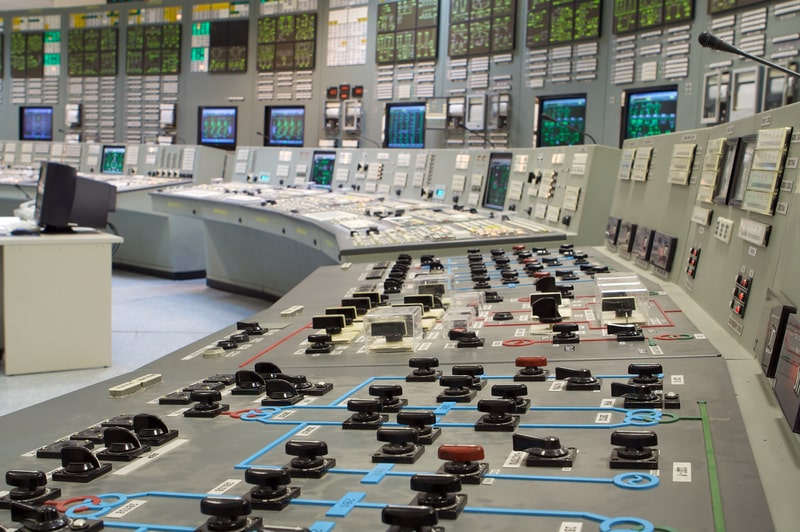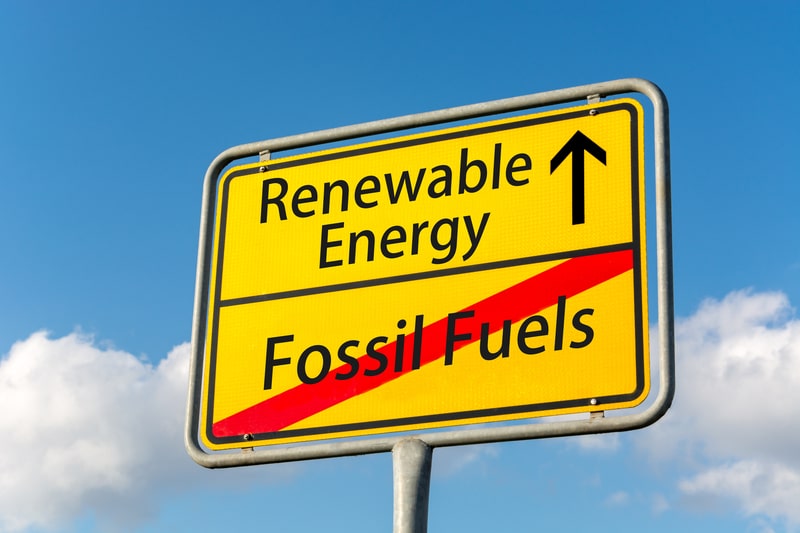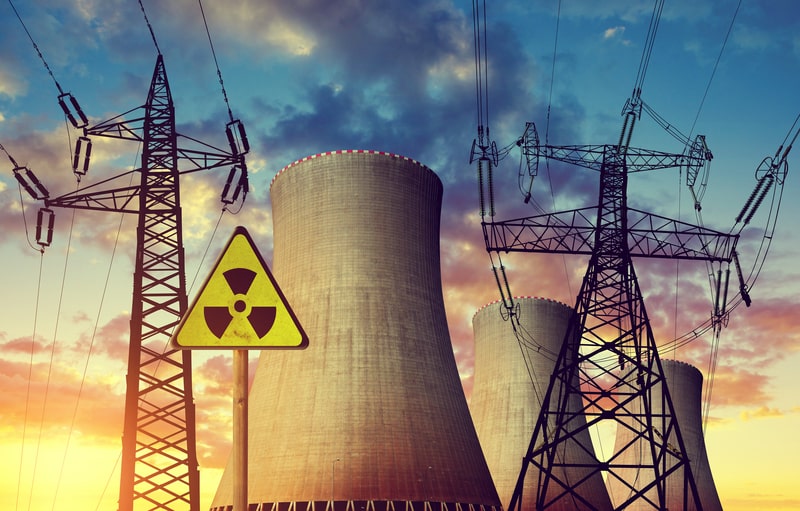Last updated on August 20th, 2023
Nuclear energy comes from splitting one uranium atom to form two smaller atoms. A tremendous amount of energy is stored in atoms to hold them together. This energy is released in the splitting process in the form of heat, which is known as fission. Turbines in any power plant use steam to turn and produce electricity, which means water needs to be heated to very high temperatures. Harnessing the energy from the fission reaction helps quickly heat the water to steam. A high level of training in nuclear physics is required to generate energy in this manner efficiently. With these facts about Nuclear energy, let us learn more about it and how it supports our energy needs.
History of Nuclear Energy
1. Uranium, the fuel used in creating the fission process and generating heat in nuclear power plants, was discovered in 1789 by Martin Kaploth. Even though he was an apothecary, he did some chemistry research.
2. The Physicist Enrico Fermi first discovered the process for splitting atoms in 1934, called fission. In his experiments, he was able to split many different types of atoms and was very much surprised by the results.
3. In 1939, Hahn and Strassmann discovered that fission releases a lot of energy and causes a self-sustaining chain reaction. This allows for continuous fission of the nuclei in other uranium atoms.
4. Russian research in nuclear energy predates that of the other scientific centers in other parts of the world. They have been busy with research as early as the beginning of the 1900s and going on for over a century.
5. In 1957 the sodium reactor in California was the first civilian nuclear power generator to come alive. It provided electricity in Santa Susana until 1966, making it a successful experiment.
6. The first nuclear power plant ever built in the US without government funding was Dresden 1 Nuclear Power Station in Illinois. It achieved a sustainable nuclear reaction to make it a self-sustaining power generator.
7. Nuclear plants built in the ‘60s and ‘70s are based on the same design used for submarines. These plants worked out well and produced affordable electricity for an ever-increasing demand.
8. Few new nuclear reactors were built between the late ‘70s and 2002 because of fear of meltdowns. People feared that the Three Mile Accident in 1979 could repeat itself and cause major disasters.
9. A sign of recovery came in 1990 when Japan started to look into building nuclear reactors to supply demand. The first third-generation power plant was commissioned, creating a new era of nuclear energy generators.

10. The nuclear energy plant accident in Chornobyl was the worst in the history of nuclear power generators. The accident was caused by a flawed reactor design operated by unqualified personnel.
11. The first experimental nuclear power plant, the EBR-1, produced only 100w on the first day of operation. This power plant started up on December 20, 1951, in Idaho. It powered four light bulbs.
Interesting Nuclear Energy Facts
12. More than 30 countries use nuclear power reactors to generate electricity. Over 90 of these nuclear power plants are in the USA. Making the USA one of the countries with the largest number of nuclear power plants.
13. Russia was the first to use a nuclear power plant to meet its energy demands. The first atomic power plant to produce electricity was in Obninsk in 1954.
14. Most nuclear reactors use enriched uranium-235 isotopes, which are much easier to split to produce energy. That is because they are light water reactors and require the source material to be enriched from 0.7% to 3-5%.
15. More than 18 percent of electric energy provided in the USA comes from nuclear power plants. Nuclear energy is the third largest method of electricity supplied after fossil and natural gas.
16. The US generated as high as a third of the world’s nuclear energy in 2022, making it the largest in the world. Other countries that also produce high amounts of nuclear power are China, France, and Russia.
17. Transporting spent nuclear fuel requires specialized methods and technologies to prevent spillage and contaminating the environment.
18. For more than 50 years, over 2,500 casks of spent fuel were transported across the US with zero spillage. The casks for transporting nuclear waste are designed to withstand up to 99% of road accidents.

19. Generating electricity with a nuclear power plant has minimal effect on the environment. The only problem is to get the source material that produces the energy. It still has a much lower environmental impact than fossil power plants.
20. There are more than 430 nuclear power plants operating worldwide. This number is growing and will grow significantly in the next few years. These power plants are connected to the grid and used to meet demands.
21. Nuclear power is currently the highest low-carbon energy provider in the US. Next in line are renewable wind and hydropower. This makes up 40 percent of the energy provided in the US.
22. Nuclear energy is relatively safer than fossil power plants to generate electricity. There were only three significant disasters with nuclear power plants, including the Chornobyl accident in 1986.
23. To make it safe for people living close to nuclear power plants, reactors must be at least 10 miles away. That is because the air can be unsafe if something goes wrong.
24. Nuclear energy plants don’t pollute the environment; placing them near rural and urban areas is safe. Because of this, they are a better option than coal and gas power stations.
25. Power plants use large quantities of water and may remove lots of water from water bodies. This may impact the area’s ecosystem of plants, fish, and other animals. Billions of gallons of water are used annually, which might not be suitable for the environment.
26. The energy cost of nuclear power plants is much lower and will not readily increase. That is because the fuel needs only to be replenished every few years. This is great for the economy of every country in the world.

27. Nuclear energy is safe from price fluctuations because it is not dependent on outside sources like coal. External sources such as coal and gas are prone to price fluctuations, influencing the value of electricity produced by fossil power plants.
28. Nuclear energy plants are shut down every 18 to 24 months so they can remove radioactive waste from the system. These cleaning cycles are necessary to keep the waste to a minimum.
29. Nuclear energy is one of the most reliable ways to provide for the electricity demand in the US. They are also reliable in extreme weather conditions, while the plants can withstand most natural disasters.
30. Did you know that out of every five households in the US, one of them uses nuclear energy? That means at least one-fifth of the population of the US uses nuclear energy to run their lives. Nuclear energy is present in medical treatments, criminal investigations, and the food industry.
31. Nuclear energy plants are some of the most energy-efficient electricity generators because they operate up to 92 percent capacity. They are up to two times as efficient as coal and gas energy plants.
32. Much less maintenance is required to run a nuclear power plant than is the case with most other types. They also operate longer than traditional power stations because they only require refueling every 18 months or more.
33. France is one of the countries with the highest percentage of nuclear energy to provide for their electricity needs. Nearly 70 percent of France’s energy needs come from nuclear energy plants.
34. The USA has the highest energy consumption from nuclear power plants. America produces more than 30 percent of the total nuclear energy generated worldwide. But they also use other resources for energy generation.
35. The word ‘nuclear’ is derived from the nucleus of an atom, where all the action of atom splitting takes place. This is possible after many years of research by a long list of renowned scientists in the 1940s.
36. Nuclear energy has been around for the last 60 years to provide the nation with electricity. Because it is so reliable, many people don’t even know they use it in their homes. When you switch on your lights or listen to music, the last thing you think of is nuclear energy.
Reactors and Radioactivity
37. The most common fuel for nuclear reactors is the element uranium. Nuclear reactors worldwide use the isotope U-235 because it is so easy to split.
38. It is crucial to properly dispose of nuclear waste because it is radioactive. Government agencies set up strict procedures for the safe disposal of radioactive waste. It takes many years for this waste to lose its radioactivity.

39. Radioactive waste is the by-product of energy generation and accumulates in the reactor when the energy dissipates. The waste can harm humans, animals, and the environment. Specially skilled professionals are the only ones that can dispose of it.
40. Uranium is a non-renewable fuel used in nuclear power plants and comes from the Earth. Four steps are involved in generating heat in the reactor before it is ready.
41. One single uranium assembly will last up to five years before it needs to be replenished. All this time, it will keep the power station running to provide electricity. Even though it is not renewable, it still lasts quite long.
42. Nuclear reactors generate a lot of heat and need to be constantly cooled down. This heat is generated by the fission process of splitting the atom’s core. More heat is released due to a chain reaction when neutrons hit more atoms, causing them to fission.
43. Nuclear reactors are built where there is a lot of water, so it can help to cool the reactor down. It is vital to keep those reactors cool so they do not melt down and cause significant health and environmental problems.
44. Nuclear reactors use two major types of water: heavy and light. Heavy water is the primary coolant and transfers heat to the secondary coolant, light water.
45. Nuclear energy battery power vehicles are used on Mars to help it explore the planet’s surface. The Mars exploration rover, Perseverance is one of these vehicles using a nuclear battery.
46. An interesting fact about nuclear energy batteries is that they will last up to 14 years. Because of this, it allows the Mars rover to cover large areas without the need to replace these batteries.
47. With new inventions in nuclear energy, some batteries can last as long as 28000 years. Nuclear Diamond Batteries use nuclear waste as the power source and diamonds to keep them running for that long.

48. Light water used in nuclear reactors is normal drinking water found in rivers, dams, and natural underground water supplies. It contains only trace amounts of chemicals which make no considerable difference in the water. Heavy water, conversely, contains heavy hydrogen and is also known as deuterium.
49. Up to five agencies monitor the nuclear waste produced by atomic energy plants in the US. That is apart from the State governments who regulate waste disposal to keep the environment safe.
50. The nuclear energy generation industry provides many jobs for those interested and helps to improve the economy. It includes positions onsite and those working on the supply chain. It also provides opportunities for those interested in highly skilled jobs.
51. With ongoing research, the capacity of nuclear power generators has increased substantially over the past few years. More than 60 percent of power plants worldwide achieve a capacity of over 80 percent.
52. Many people fear that nuclear energy plants may cause environmental and life-threatening disasters, but that is not so. History has proven that it is one of the safest technologies to generate electricity and is reliable.
53. More than 90 percent of the potential energy is still available in the fuel even after being used for five years. Great opportunity for energy generation is still available to be exploited repeatedly.
54. There are many different uses for nuclear energy, and that does not include generating electricity for your home. Space exploration is one of the many ways nuclear energy comes in handy to make it easier for astronauts. Submarines use a nuclear generator to power them and can stay underwater for a long time.
55. While the fuel used in a nuclear energy generation plant is not renewable, energy itself is renewable. Uranium pellets used in the reactor still possess more energy that can be used for other means.
56. The fuel fabrication process for nuclear plants is complicated and long-winded. It may take several steps before the uranium can be fabricated and used in the nuclear reactor.
57. Hundreds of fuel assemblies make up the core of a nuclear energy generator. A power plant with an output of 1,000 MW will have about 75 tons of low-enriched uranium in the core.
58. More than 10 percent of the world’s energy comes from nuclear power plants, which is not a lot. Much more than this is needed to provide carbon-free energy and make the environment safer.
59. More than 220 research nuclear reactors in up to 50 countries worldwide provide isotopes for research purposes. These isotopes are used in training and for medical and industrial applications.
60. The fuel that goes into the reactor is in solid form. It also comes out after it is used as a solid. Sealed metal tubes containing ceramic pellets made from uranium are assembled inside the reactor. The radioactive waste remains inside these solid ceramic uranium pallets when removed from the reactor.

61. Some European countries, like Italy and Denmark, use nuclear power imported from surrounding countries. Italy shut down all nuclear power plants after the Chornobyl accident 1986 for fear of the same disasters.
62. Germany has the lowest nuclear energy use in all of Europe. Only about 12 percent of the energy produced in Germany comes from nuclear energy generators. They phased out nuclear reactors in 2002.
63. US power plants produce up to 2,000 metric tons of nuclear waste annually. This number will increase significantly as more nuclear power plants are built to meet carbon-free energy demands.
64. Spent fuel used in US nuclear power plants is stored in over 70 locations. These sites are safe and secure; the stored spent fuel poses no environmental danger. The Department of Energy is responsible for finding sites and storing nuclear waste.
. . . continue reading on the next page
